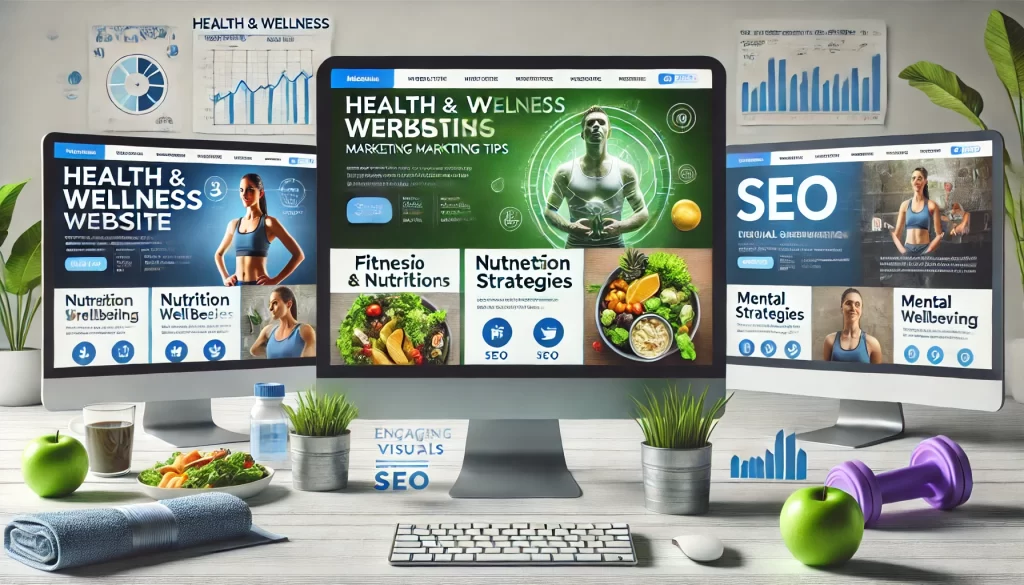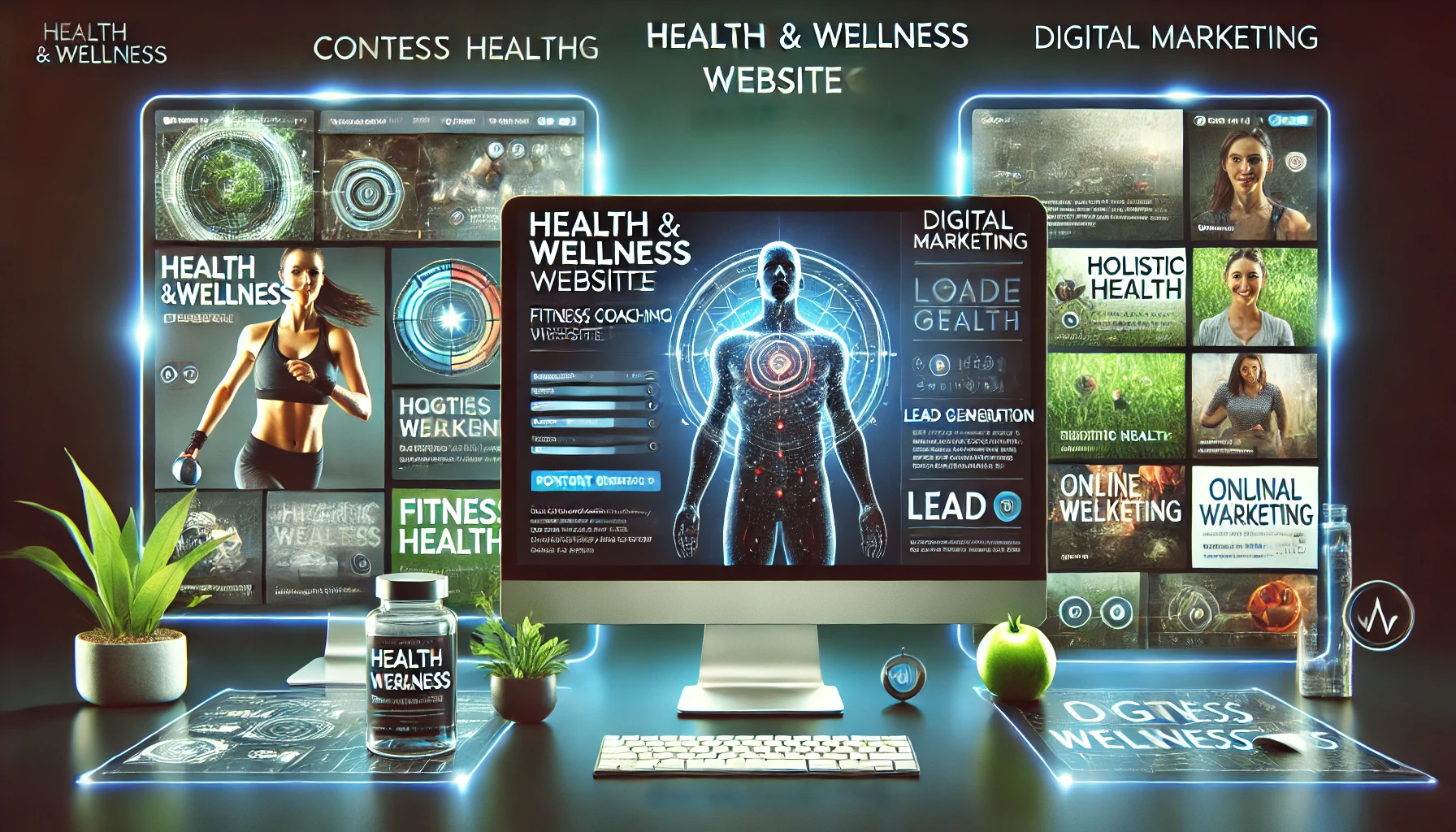Introduction
In today’s digital-first world, the importance of having a well-designed and functional website for health and wellness professionals cannot be overstated. Whether you’re a doctor, fitness trainer, nutritionist, or wellness coach, your website is the digital front door to your services. A high-quality website can not only build trust but also drive conversions and client loyalty. However, creating an effective health and wellness website goes beyond just aesthetic design; it involves a deep understanding of your target audience, technical SEO, user experience (UX), and compelling content that resonates with health-conscious individuals.
This guide aims to delve into key aspects of healthcare website design, wellness marketing, and website design for health professionals, offering actionable insights for professionals and organizations looking to make an impact online. Whether you’re launching a new health-related website or revamping an existing one, this article will provide you with the necessary tools to design a site that stands out in a competitive market.

Overview of the Importance of Healthcare and Wellness Websites
In the health and wellness industry, having a website is no longer optional, it’s essential. A well-crafted website serves as the first point of contact for potential clients, patients, and customers. It’s where they go to understand who you are, what services you offer, and how they can benefit from your expertise.
A health-focused website is not just a marketing tool; it is a powerful medium that connects professionals with their community. By making health and wellness content accessible, educational, and actionable, a website can influence decision-making processes and build lasting trust. Whether it’s a clinic, a gym, a therapy center, or a wellness product company, having an optimized digital presence is key to reaching a broader audience.
The demand for accessible, reliable, and engaging health information has increased, and as a result, websites dedicated to health and wellness website design need to prioritize clear communication, ease of use, and professionalism.
Related Posts
- Examples of Effective Healthcare Websites
- Additional Resources for Healthcare Website Design
- Best Performing Healthcare Websites by Category
Why a User-Centric Design Matters for Healthcare Professionals and Organizations
A user-centric design focuses on creating an optimal experience for visitors to your site, ensuring that they can navigate, find information, and engage with ease. For healthcare professionals and organizations, the design of your website has a significant impact on how potential clients perceive your services. The design isn’t just about looks—it’s about functionality and providing a seamless experience that fosters trust and encourages action.
The first impression of your website can determine whether a potential client stays or leaves. If your website is confusing, cluttered, or difficult to navigate, visitors may not trust you with their health and wellness needs. Conversely, a user-friendly website can increase conversions, from booking appointments to purchasing wellness products.
A user-centric design takes into account several factors:
- Mobile Optimization: Many users access websites on their phones, especially for on-the-go health information. A responsive website adapts to different screen sizes, ensuring that content remains accessible no matter the device.
- Fast Loading Speed: In health and wellness, where trust is vital, a slow website can lead to frustration and lost opportunities. Sites need to load quickly to keep visitors engaged.
- Clear Navigation: Whether visitors are looking for services, blog posts, or contact information, a well-organized website ensures they find what they need with minimal effort.
- Accessibility and ADA Compliance: Health websites should be designed to cater to all visitors, including those with disabilities. This includes providing alt-text for images, keyboard navigability, and screen reader compatibility.

Addressing Key Healthcare Website Design, Content, and Marketing Aspects
This guide aims to equip healthcare professionals with the knowledge to create websites that not only look great but also work effectively in a competitive online space. The following sections will cover everything from web design best practices to content strategy, SEO tactics, and digital marketing techniques tailored to the health and wellness industry.
We’ll dive into:
- How to design a health and wellness website that speaks to your audience’s needs.
- Best practices for creating content that educates, informs, and engages your visitors.
- The fundamentals of digital marketing for health professionals, including SEO, social media, and email marketing.
- Tips on maintaining trust and authority with your audience, while complying with industry regulations.
The Key Components of Health and Wellness Website Design
Design with the User in Mind
When building a health and wellness website, your design must prioritize the needs and expectations of your users. Consider the type of visitor you’re attracting—whether they are looking for information about specific health issues, looking for a service provider, or seeking inspiration for their wellness journey. A streamlined, intuitive layout and design ensure a positive experience and leave visitors more likely to return.
Integrating Brand Identity with Design Elements
Your website is an extension of your brand. From colors to fonts and imagery, each element should reflect your values and resonate with your target audience. For example, a fitness coach’s website may embrace energetic, vibrant colors, while a holistic wellness center may lean towards soothing tones to evoke calmness.
Clear Call-to-Actions (CTAs)
For healthcare professionals, the ultimate goal of your website is to convert visitors into clients. This means that every page must have clear, easy-to-find calls-to-action, whether it’s for booking an appointment, downloading an eBook, or signing up for a newsletter.
Health and Wellness Content Strategy
The Power of Educational Content
Health-conscious consumers turn to the internet for answers. By providing relevant and useful information, your website can establish authority. You should create content that answers common health and wellness questions, showcases your expertise, and provides value to your audience.
Balancing Information and Marketing
While it’s essential to provide educational content, don’t forget the marketing aspect. Integrating service information, testimonials, and case studies within your content can seamlessly guide your visitors toward making an informed decision. Remember, health and wellness is a relationship-building industry, and you need to balance content with promotional material that feels natural.
Use of Blogs and Resources
Creating a blog on your website is a powerful way to regularly engage your audience. Offering advice, tips, and wellness resources not only drives traffic but also boosts your SEO rankings. Write posts that answer specific pain points, share wellness strategies, or discuss the latest trends in healthcare.
Health and Wellness Website Marketing Strategies
Leveraging SEO to Boost Visibility
SEO (Search Engine Optimization) is crucial for health and wellness websites. Proper optimization ensures that your website ranks higher in search engine results, making it easier for potential clients to find you. Focus on keyword-rich content, local SEO, and on-page optimization, such as meta tags, alt text for images, and internal linking.
Social Media Marketing
Social media platforms are excellent for engaging with your audience. By sharing educational content, and success stories, and promoting special offers, you can foster a community around your health and wellness brand. Platforms like Instagram, Facebook, and LinkedIn are ideal for professionals in this industry, offering a place to share tips, post client testimonials, and engage with followers.
Email Marketing and Newsletters
Email marketing allows you to build stronger relationships with clients and prospects. Regular newsletters that provide valuable health tips, updates, and promotions can keep your audience engaged and encourage them to take action. Ensure that your email design is as user-friendly as your website and maintains a professional tone.
Trust and Authority in Health and Wellness Websites
Building trust and authority is paramount in the health and wellness industry. Your website should be a source of reliable, accurate information. Avoid using generic, vague content; instead, provide evidence-based content and clear references to support your claims.
Additionally, incorporating client testimonials, case studies, and certifications can further bolster your credibility. Show that you are a trusted resource in your field.
Related Posts
- Key Features of Health and Wellness Websites
- Integrating Wellness Services
- Fitness and Wellness Websites: Design and Content
FAQs
Why is website design important for health professionals?
A well-designed website instills trust, offers a seamless experience, and makes it easy for visitors to navigate and book appointments.
What should I focus on in health and wellness website content?
Prioritize educational content, clear service descriptions, and a balanced mix of promotional material.
How can I increase traffic to my health website?
Focus on SEO strategies, including keyword optimization, creating valuable content, and engaging in social media marketing.
What makes a health and wellness website trustworthy?
Offering accurate, evidence-based content, sharing client testimonials, and displaying certifications are key elements.
Key Takeaways
In conclusion, a health and wellness website is much more than an online presence; it’s a vital tool for establishing trust, attracting clients, and marketing your services. By focusing on user-centric design, high-quality content, and effective marketing strategies, you can create a website that not only ranks well but also builds lasting relationships with your audience.
- Design with the user in mind for a seamless experience.
- Incorporate educational content to establish authority.
- Leverage SEO, social media, and email marketing to grow your audience.
- Ensure your website is trustworthy by offering accurate, evidence-based information.
